Když lyžujete v nepředvídatelném sněhu – rozbitém, rozježděném nebo větrném – potřebujete vybavení, které drží krok. Dlouhé lyže možná dominují trhu, ale často se potýkají s úzkým, chaotickým terénem. Přicházejí krátké lyže, jako ty od Snowfeet*, navržené pro rychlé zatáčky, kontrolu a menší námahu v náročných podmínkách.
Hlavní poznatky:
- Snowfeet* Skiblades (65 cm): Ultra obratné, lehké a vhodné pro začátečníky. Perfektní pro rychlé zatáčky, ale ne ideální do hlubokého prašanu. 299–349 dolarů.
- Snowfeet* Skiblades (99 cm): Vyvažují obratnost a stabilitu. Skvělé pro smíšený sníh. 490 dolarů.
- Snowfeet* Short Skis (120 cm): Nabízí větší stabilitu pro pokročilé lyžaře. Dobře zvládají strmější terén. 690 dolarů.
- Snowfeet* POWDER (99 cm): Navrženy pro dny s prašanem s lepším plováním. 490 dolarů.
- Tradiční dlouhé lyže (např. Blizzard Rustler 9, Black Crows Atris, Salomon Stance 96): Stabilní při vysokých rychlostech, ale méně obratné a fyzicky náročnější. Ceny se pohybují od 525 do více než 1200 dolarů.
Proč krátké lyže?
- Obratnost: Snadné otáčení v úzkých prostorách nebo na rozbitém sněhu.
- Přenosnost: Kompaktní a snadno přenosné.
- Úsilí: Méně únavné než dlouhé lyže, i na dlouhých sjezdech.
- Úsporné: Připravené sestavy šetří peníze za vázání a montáž.
Krátké lyže jako Snowfeet* mění pravidla hry pro lyžaře, kteří chtějí kontrolu a zábavu bez potíží s objemným vybavením. Připraveni si lyžování usnadnit? Čtěte dál pro všechny detaily.
Krátké lyže vs. dlouhé lyže
1. Snowfeet* Skiblades (65 cm)
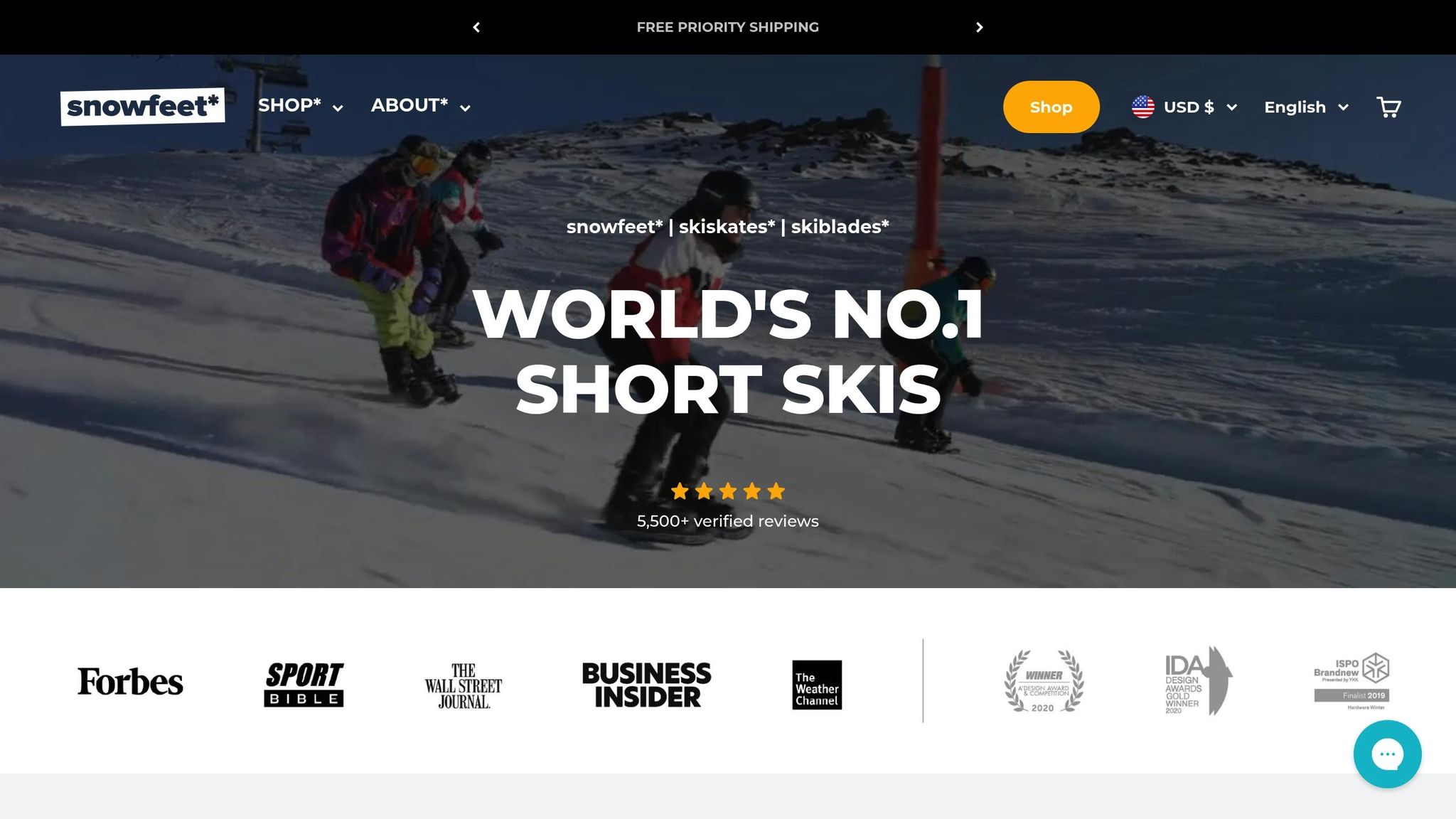
Snowfeet* Skiblades (65 cm) přinášejí zcela novou úroveň kontroly a obratnosti do nepředvídatelných sněhových podmínek. Jejich ultra krátký design je průlomový, zejména v terénu, kde se tradiční lyže často potýkají s udržením kroku.
Obratnost
Když se sněhové podmínky neustále mění, obratnost je důležitější než surová rychlost. S délkou pouhých 65 cm tyto Skiblades umožňují rychlé a přesné pohyby hranou na hranu. Na rozdíl od delších lyží, které vyžadují široké, plynulé zatáčky, tyto vám dovolí okamžitě se otočit a přizpůsobit, což vám dává výhodu, když se sníh pod vámi mění.
Kontrola v nepředvídatelném terénu
Kratší délka těchto Skiblades vám dává neuvěřitelnou kontrolu na náročném a nerovném sněhu. Vybavené kovovými hranami a citlivým capem snadno prořezávají proměnlivý terén. Tento design snižuje odpor a pomáhá vám udržet rovnováhu, i když vám terén přichystá nečekané výzvy.
Méně námahy, více zábavy
Jedna z nejlepších výhod těchto Skiblades? Jsou mnohem méně fyzicky náročné než tradiční lyže. Jejich lehká a kompaktní konstrukce znamená menší zátěž na nohy, takže můžete trávit více času užíváním svahů, aniž byste byli vyčerpaní.
Snadné přenášení
Tradiční lyže mohou být otravné na přenášení, zvlášť pokud se pohybujete mezi různými oblastmi. Skiblades o délce 65 cm jsou dostatečně kompaktní, aby se vešly do batohu, což je ideální pro výlety do volné přírody nebo přesuny mezi sněhovými zónami. Už žádné zápasy s objemným vybavením!
Cena (USD)
S cenou mezi 299 a 349 dolary jsou tyto Skiblades výhodnou koupí ve srovnání s tradičními lyžařskými sety, které vás mohou stát 600–900 dolarů nebo více za lyže a vázání od značek jako Salomon nebo Blizzard. Navíc přicházejí připravené k použití s univerzálními možnostmi vázání – standardní lyžařská vázání nebo snowboardová vázání přizpůsobená této platformě. To z nich dělá nejen cenově efektivní, ale i praktickou volbu pro zvládání proměnlivých sněhových podmínek.
2. Snowfeet* Skiblades (99 cm)
Snowfeet* Skiblades (99 cm) představují skvělý kompromis mezi obratností a stabilitou. Staví na hbitosti modelu 65 cm, ale nabízejí větší kontrolu, což je solidní volba pro lyžaře, kteří chtějí zvládnout hrubý sníh, rozbitý terén a větrné nárazy bez objemu tradičních dlouhých lyží. Pokud hledáte něco snadno ovladatelného, ale stále dostatečně stabilního pro nepředvídatelné podmínky, tyto by mohly být přesně to, co potřebujete.
Obratnost
S délkou 99 cm tyto Skiblades nabízejí kombinaci rychlých zatáček a zvýšené stability. Na rozdíl od tradičních lyží od značek jako Rossignol nebo K2, které často měří 160–180 cm a vyžadují široké, odhodlané zatáčky, kratší délka zde umožňuje rychlé změny směru. Narazíte na větrnou krustu nebo měkký rozbitý sníh? Žádný problém – můžete se okamžitě přizpůsobit bez boje s nadměrnou délkou.
Kratší design také znamená rychlejší zapojení hran, což je zásadní při lyžování v terénu, který vám během jedné jízdy nabídne různé sněhové textury. Delší lyže vyžadují více předvídavosti, ale tyto Skiblades reagují na vaše pohyby okamžitě, což vám dává přesnou kontrolu, když je to nejdůležitější.
Kontrola v proměnlivém sněhu
Skiblades o délce 99 cm nabízejí lepší plavnost než verze 65 cm, což se hodí na proměnlivém sněhu. Jejich design vám pomáhá klouzat přes smíšené textury při zachování kontroly, což usnadňuje zvládání měnící se hustoty sněhu bez toho, aby se špičky lyží zabořily nebo byly vychýleny.
Kde tradiční lyže často vyžadují agresivní úsilí, aby prořízly tvrdý sníh, tyto Skiblades vám umožní zvládnout stejný terén s elegancí. Můžete lyžovat s menší fyzickou námahou a větší jistotou, i v náročných podmínkách.
Požadované úsilí
Díky snížené hmotnosti při houpání jsou tyto Skiblades šetrnější k vašim kolenům a bokům. Rozdíl pocítíte během dlouhých dnů na svahu – zatímco tradiční lyže vás po několika jízdách mohou unavit, tyto udrží únavu na uzdě, takže můžete pokračovat dál.
Přenosnost
Ačkoliv jsou delší než model 65 cm, Skiblades o délce 99 cm jsou stále kompaktní a snadno přenosné. Jsou jednoduché na přepravu a skladování, což je praktická volba pro lyžaře, kteří rádi objevují více hor nebo se vydávají do volné přírody. Ať už vyrážíte na jednodenní výlet nebo na dobrodružství v několika střediscích, tyto Skiblades jsou dost malé na to, aby se vyhnuly potížím s nosiči na střeše nebo poplatkům za nadměrnou zavazadla.
Cena (USD)
Začínají na 490 USD, tyto Skiblades nabízejí hodně výkonu za svou cenu. Když je porovnáte s prémiovými all-mountain lyžemi od značek jako Atomic nebo Völkl – které samy o sobě stojí 700–1 200 USD, plus 300–500 USD za vázání – jsou mnohem cenově dostupnější volbou. Navíc přicházejí připravené k jízdě s vázáním v ceně, což je chytrá volba pro každého, kdo chce zvládnout proměnlivý sníh, aniž by musel utrácet majlant.
3. Snowfeet* Short Skis (120 cm)
Snowfeet* Short Skis (120 cm) kombinují obratnost kratších lyží s přidanou stabilitou, čímž vytvářejí ideální rovnováhu mezi tradičními lyžemi a kompaktním, inovativním zážitkem z krátkých lyží. S délkou 120 cm (47 palců) jsou to nejdelší lyže v řadě Snowfeet*, nabízející větší plochu pro stabilitu a plavnost, přičemž si zachovávají ovladatelnost, kterou krátké lyže prosluly. Jsou ideální pro lyžaře, kteří chtějí trochu více kontroly, aniž by museli řešit objem klasických dlouhých lyží.
Obratnost
I jako nejdelší možnost v řadě Snowfeet* zůstávají 120cm lyže mnohem obratnější než tradiční lyže od značek jako Burton nebo Salomon, které často měří 165–180 cm (65–71 palců). Jejich kratší délka umožňuje rychlejší zatáčky a plynulejší navigaci v proměnlivých sněhových podmínkách, což je činí ideálními pro sjezdovky s nepředvídatelným terénem.
Při pohybu oblastmi s proměnlivým sněhem – jako je větrná krusta až po měkčí rozbředlý sníh – se tyto lyže přizpůsobují bez námahy. Na rozdíl od delších lyží, které vyžadují široké, plynulé oblouky, design 120 cm vám umožní otáčet se na místě. Navíc kratší špička a patka usnadňují proplétání mezi překážkami jako kameny nebo větrné nánosy bez pocitu těžkopádnosti.
Kontrola v proměnlivém sněhu
Díky větší ploše tyto lyže excelují v hlubším, nekonzistentním sněhu. Délka 120 cm poskytuje dostatečný vztlak, aby vás udržela na povrchu rozbitého a rozbředlého sněhu, zatímco kompaktní konstrukce zabraňuje zaboření nebo zachycení špiček v nerovném sněhu.
Přechody mezi různými texturami sněhu jsou oblastí, kde tyto lyže vynikají. Pohyb z pevnějších, větrných ploch na měkčí, rozbité úseky je plynulý. Vyvážený design zajišťuje stabilní kontakt hran, čímž se vyhýbá nepředvídatelnému chování, které může občas trápit delší lyže.
Požadované úsilí
I když vyžadují o něco více úsilí než kratší modely Snowfeet*, tyto lyže jsou stále mnohem méně vyčerpávající než tradiční dlouhé lyže. Jejich snížená hmotnost při švihu minimalizuje únavu nohou a jádra i během dlouhých, náročných jízd.
V proměnlivých sněhových podmínkách, kde jsou nutné neustálé úpravy, 120cm lyže představují skvělou rovnováhu. Jsou dostatečně stabilní, aby snížily potřebu neustálých mikro-korekci, ale zároveň lehké, aby vás udržely v pohybu, aniž by vás unavily.
Přenosnost
S délkou 47 palců se tyto lyže snadno přepravují. Vejdou se do většiny aut bez nutnosti střešních nosičů a jsou jednoduché na přenášení na krátké vzdálenosti. I když nejsou tak kompaktní jako menší možnosti Snowfeet*, jsou stále dost malé na to, aby se vyhnuly poplatkům za nadměrnou zavazadlovou hmotnost u leteckých společností, což je činí praktickou volbou pro cestování.
Skladování je také hračka. Ať už jste v malém bytě, garáži nebo lyžařské skříňce, tyto lyže nevyžadují prostor ani speciální skladovací řešení, která často vyžadují delší lyže.
Cena (USD)
Za cenu 690 USD jsou Snowfeet* Short Skis (120 cm) prémiovou volbou v nabídce, přesto však nabízejí skvělou hodnotu ve srovnání s tradičními lyžařskými sety. All-mountain lyže mohou snadno stát dvakrát tolik, a to ještě před započítáním vázání, které může přidat dalších 400–600 USD za kvalitní možnosti od značek jako Atomic nebo Völkl.
Tyto lyže přicházejí připravené na sjezdovky s vázáním v ceně, což vám ušetří další výdaje a problémy s kompatibilitou. Pro lyžaře, kteří čelí proměnlivému sněhu a hledají vysoce výkonnou krátkou lyži, je to solidní investice, která vyvažuje všestrannost, výkon a pohodlí. Dále uvidíme, jak si vedou ve srovnání s jinými značkami jako Blizzard a Black Crows.
4. Snowfeet* POWDER (99 cm)
Model Snowfeet* POWDER je o poskytování neuvěřitelného zážitku v hlubokém prašanu. Na rozdíl od 99 cm Skiblades, které jsou stavěné pro rychlé přechody hran v různorodém terénu, je POWDER speciálně navržen pro dny s prašanem. Jeho zesílený, kompaktní design zvyšuje jak plovoucí schopnost, tak kontrolu, což z něj dělá sen pro manévrování v měkkém sněhu. Navíc je stále super snadné ho nosit, takže nemusíte dělat kompromisy v přenosnosti.
Za 490 $ je POWDER chytrou volbou pro milovníky prašanu, kteří chtějí špičkový výkon bez objemu. Je to skvělá kombinace funkčnosti a pohodlí, přizpůsobená pro ty epické jízdy v prašanu.
5. Blizzard Rustler 9
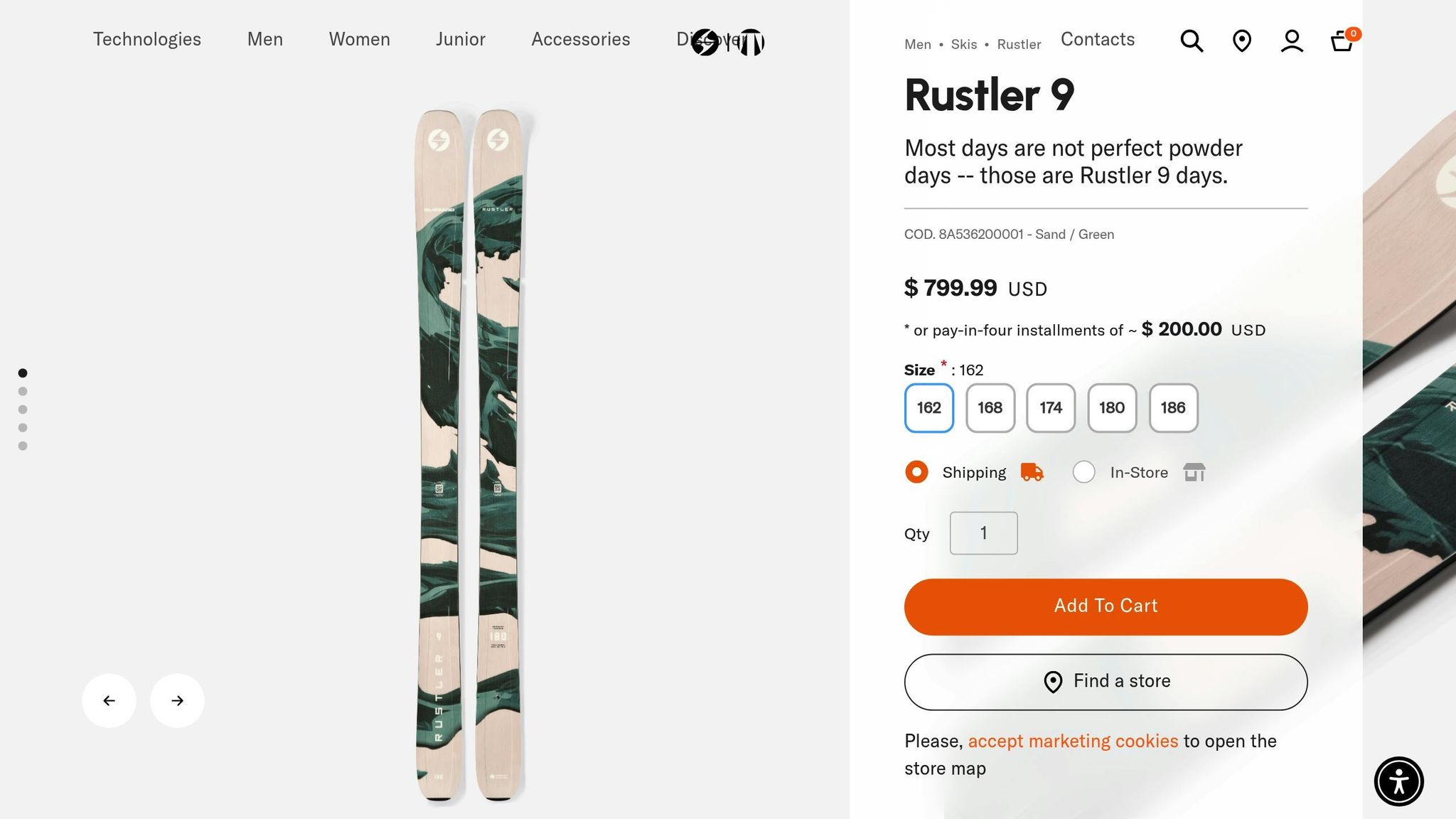
Blizzard Rustler 9 je klasická dlouhá lyže postavená pro zvládání proměnlivých sněhových podmínek. S cenou 750 $ (i když ji můžete chytit ve slevě za cca 525 $) je určena pro zkušené lyžaře, kteří upřednostňují sílu a stabilitu před rychlými, obratnými pohyby.
Obratnost
Rustler 9 je často nazýván "nejobratnějším z řady Rustler", ale buďme upřímní - při délkách až 186 cm (více než 6 stop) není přesně stavěn pro těsné, rychlé zatáčky. Zatímco jeho pokročilá konstrukce poskytuje hladký a předvídatelný flex, má potíže s ostrými otočkami přes nerovný sníh nebo rozbředlý terén. Ve srovnání s ultra krátkými lyžemi jako Snowfeet* Skiblades, které excelují v rychlých úpravách, Rustler 9 vyžaduje více úsilí a dovedností k manévrování.
Kontrola v proměnlivém sněhu
Pokud jde o zvládání drsných, rozbředlých nebo zledovatělých podmínek, Rustler 9 si vede dobře - pokud jste připraveni na tvrdou práci. Recenzenti uvádějí, že "září na rozbředlých, rozbitých a zledovatělých dnech", ale dosahuje toho silným a záměrným stylem lyžování. Na rozdíl od kratších lyží jako Snowfeet*, které nabízejí bez námahy reakceschopnost, Rustler 9 vyžaduje neustálou pozornost a hodně energie k udržení kontroly.
Požadované úsilí
Navržený pro tvrdé experty, Rustler 9 není pro slabé povahy. Jeho délka 186 cm vyžaduje přesnost a fyzickou sílu k průjezdu náročným sněhem. Každý oblouk je závazkem, což z něj dělá lyži nejvhodnější pro ty, kteří vynikají v námaze a síle.
Přenosnost
Tady je věc s tradičními dlouhými lyžemi: jsou objemné. Rustler 9 o délce 186 cm není jen výzvou na sjezdovkách - je také nepohodlný na přepravu a skladování. Přidejte k tomu jeho těžší konstrukci a máte lyži, která není zrovna cestovatelsky přívětivá. To je výrazný kontrast k kompaktnímu a lehkému designu produktů Snowfeet*.
Cena (USD)
Kromě počáteční ceny přináší vlastnictví lyže jako Rustler 9 skryté náklady. Pravděpodobně budete potřebovat další přepravní vybavení a fyzické nároky lyžování s ní se mohou sčítat v podobě úsilí a času na svahu. I když její výkon v POWDER získává vynikající hodnocení 10,0/10, tradiční design dlouhých lyží může působit omezujícím dojmem v proměnlivých sněhových podmínkách. Právě zde skutečně vyniká obratnost a rychlá odezva kratších lyží jako Snowfeet*.
Dále se ponoříme do toho, jak si ostatní prémiové lyžařské možnosti vedou ve srovnání s inovativní řadou Snowfeet*.
sbb-itb-17ade95
6. Black Crows Atris
Black Crows Atris, vyrobený ve Francii, je určen pro lyžaře, kteří preferují tradiční dlouhé lyže. Nicméně ve srovnání s obratnou a nenáročnou řadou Snowfeet* v několika ohledech zaostává.
Obratnost
Díky své delší konstrukci Atris inklinuje k širokým, plynulým obloukům spíše než k rychlým, ostrým otočkám. To z něj dělá méně citlivý nástroj než Snowfeet* Skiblades, které vynikají okamžitou ovladatelností. Pokud hledáte rychlé a přesné pohyby, Atris může ve srovnání působit trochu pomalu.
Kontrola v proměnlivém sněhu
Atris je navržen tak, aby zvládal směs sněhových podmínek díky své tuhé konstrukci, která udržuje stálý kontakt hran. To však často vyžaduje silnější lyžařský styl. Snowfeet* Skiblades naopak umožňují bez námahy a okamžité úpravy, což z nich činí uživatelsky přívětivější volbu pro navigaci v nepředvídatelném terénu.
Požadované úsilí
Dlouhé lyže jako Atris vyžadují více fyzické námahy, což může vést k rychlejší únavě. Naproti tomu modely Snowfeet* jsou navrženy tak, aby byly energeticky efektivní, což je lepší volba pro ty, kteří preferují méně náročný zážitek.
Přenosnost
Přeprava a skladování Atris může být komplikované kvůli jeho délce. Často vyžaduje specializované nosiče, na rozdíl od kompaktní a snadno přenosné řady Snowfeet*, která se pohodlně vejde do většiny tašek nebo dokonce batohů.
Cena (USD)
Dlouhé lyže jako Atris často přinášejí skryté náklady. Kromě počátečního nákupu budete pravděpodobně muset počítat s vázáním, profesionální montáží a někdy i se specializovaným přepravním vybavením. Tyto dodatečné výdaje mohou učinit Atris méně finančně dostupným ve srovnání s efektivními a cenově příznivými produkty Snowfeet*.
Zatímco Black Crows Atris je dobře zpracovaná volba v kategorii dlouhých lyží, zároveň zdůrazňuje některé inherentní výzvy tradičních lyžařských designů, zejména pokud jde o všestrannost a pohodlí v proměnlivých podmínkách. Alternativy Snowfeet*, díky své snadné použitelnosti a přenosnosti, nabízejí přesvědčivý kontrast.
7. Salomon Stance 96
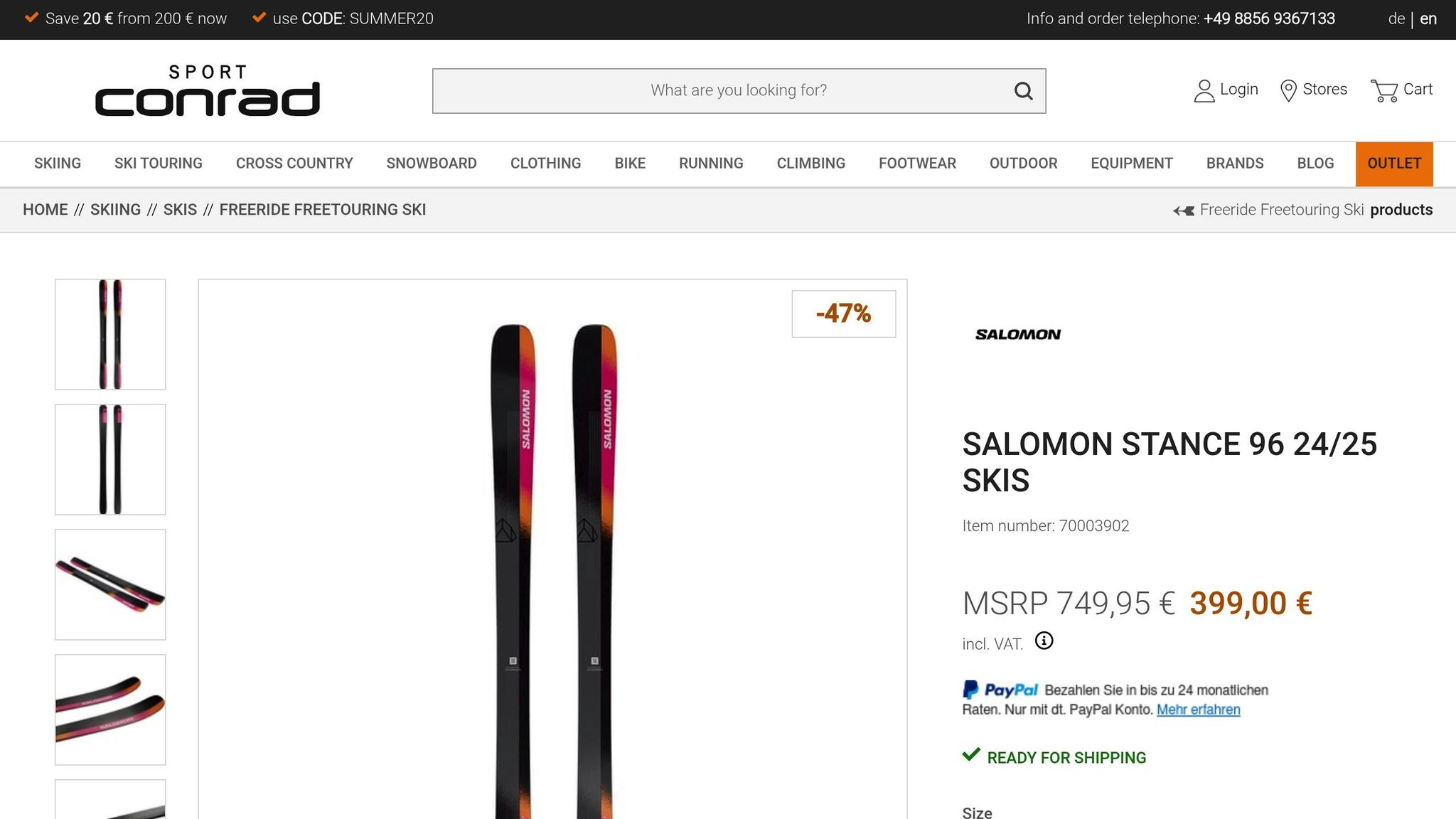
Salomon Stance 96 jsou delší lyže s designem twin-tip, vytvořené pro zvládání smíšených sněhových podmínek. Jejich klasická konstrukce poskytuje stabilitu, ale vyžaduje větší úsilí při navigaci v proměnlivém terénu, jako je rozbředlý sníh, muldy nebo vítr ovlivněný sníh. Díky tomu jsou méně odpouštějící, když se podmínky rychle mění.
Obratnost
S typickou délkou od 170 do 180 cm vyžaduje Stance 96 záměrné, pomalejší zatáčky. Na rozdíl od kratších, obratnějších designů neumožňuje rychlé, ostré otočky, což může být výzvou v nepředvídatelném terénu.
Jízda na proměnlivém sněhu
Dvojitě zahnutá konstrukce Stance 96 nabízí slušný výkon v proměnlivých podmínkách, ale jeho délka znamená, že lyžaři musí vynaložit více úsilí, aby udrželi kontrolu. Tato dodatečná námaha může působit omezujícím dojmem ve srovnání s kompaktnějšími designy, které reagují plynule na náhlé změny textury sněhu.
Úroveň námahy
Delší lyže jako Stance 96 vyžadují aktivní, přesné pohyby pro kontrolované zatáčky. To může vést k rychlejší únavě, zejména během delších jízd v náročných sněhových podmínkách. Kompaktní systémy jsou naopak často šetrnější k nohám a vyžadují méně energie.
Přenosnost
S ohledem na svou velikost není Stance 96 zrovna cestovatelsky přátelský. Budete potřebovat speciální lyžařskou tašku nebo střešní nosič, což může být nepohodlné. Kompaktní alternativy jsou naopak mnohem snazší na skladování a přenášení, což je činí pohodlnějšími pro cestování.
Cena (USD)
Cena Stance 96 může narůst, zvláště když započítáte vázání a montáž. Mnoho kompaktních modelů má integrované sestavy, což může ušetřit peníze i námahu. Pro lyžaře, kteří čelí proměnlivému sněhu, je to další důvod, proč se kompaktní designy stávají stále populárnějšími.
Salomon Stance 96 je solidním příkladem tradiční konstrukce lyží, ale jeho omezení v obratnosti, přenosnosti a energetické účinnosti ukazují, proč mnoho lidí přechází na kompaktnější možnosti pro náročné podmínky.
Výhody a nevýhody
Když porovnáte Snowfeet* s tradičními dlouhými lyžemi, rozdíly ve výkonu, pohodlí a ceně jsou opravdu výrazné. Zde je rychlý přehled, který vám pomůže porovnat:
| Model lyží | Délka | Výhody | Nevýhody | Nejvhodnější pro |
|---|---|---|---|---|
| Snowfeet Skiblades (65 cm) | 65 cm | Super lehké, snadno sbalitelné do batohu, rychle reagující, kompatibilní s zimní obuví, cena 450 $ | Má potíže v hlubokém POWDER | Těsné zatáčky, vhodné na cestování, začátečníci |
| Snowfeet Skiblades (99 cm) | 99 cm | Skvělá rovnováha mezi kontrolou a stabilitou, dobře zvládá rozbředlý sníh, cena 490 $ | Méně přenosné než verze 65 cm | Všestranné použití, smíšené podmínky |
| Snowfeet Short Skis (120 cm) | 120 cm | Špičková stabilita pro krátké lyže, silný záběr hran, cena 690 $ | Vyžaduje více prostoru pro zatáčky | Pokročilí lyžaři, strmější terén |
| Snowfeet POWDER (99 cm) | 99 cm | Navrženo pro POWDER při zachování obratnosti krátkých lyží, cena 490 $ | Vyšší cenovka | Dny s POWDER a smíšeným terénem |
| Blizzard Rustler 9 | 172–188 cm | Klasická stabilita, důvěryhodná značka | Těžké, obtížnější na přenášení, vyžaduje lyžařské boty a vázání | Zkušení lyžaři v stabilních podmínkách |
| Black Crows Atris | 170–186 cm | Univerzální pro all-mountain lyžování | Delší délka ztěžuje rychlé zatáčky | Pokročilí tradiční lyžaři |
| Salomon Stance 96 | 170–180 cm | Design s dvojitou špičkou, silná značka | Vyžaduje více úsilí a je méně odpouštějící | Tradiční lyžování zaměřené na freestyle |
Proč Snowfeet* vynikají
Krátké lyže jako Snowfeet* jsou o obratnosti. Otáčejí se na místě, což je ideální pro navigaci v různorodých sněhových podmínkách bez odporu, který přinášejí delší lyže. Tradiční lyže? Ty vyžadují více plánování a úsilí, aby zůstaly pod kontrolou, zejména v proměnlivém terénu.
Cena je další velkou výhodou Snowfeet*. Jsou připravené k použití hned po vybalení, zatímco tradiční vybavení obvykle přináší další náklady - počítejte s 100–200 $ za montáž vázání a další vybavení. Navíc jsou modely Snowfeet* lehčí na přenášení a vyžadují méně energie na svahu, což znamená, že se můžete více soustředit na zábavu a méně na námahu.
Pro začátečníky nebo kohokoli, kdo ocení přenosnost a rychlou reakci, jsou Snowfeet* průlomem. Jsou odpouštějící, snadno se na nich učí a snadno se přenášejí - vlastnosti, které tradiční dlouhé lyže prostě nemohou nabídnout. Pokud čelíte nepředvídatelným svahům, Snowfeet* je ta správná volba.
Závěr
Krátké lyže Snowfeet* mění pravidla hry, pokud jde o zvládání nepředvídatelného sněhu. Překonávají tradiční dlouhé lyže svou obratností, kontrolou a rychlou odezvou.
S možnostmi od 65 cm modelu ideálního pro začátečníky až po 120 cm verzi pro pokročilé lyžaře je tu něco pro každého. Tato řada zjednodušuje lyžování bez složitých nastavení, což dokazuje, že Snowfeet* umí splnit různé potřeby promyšleným designem.
Co Snowfeet* opravdu odlišuje, je jejich připravenost k použití a závazek ke kvalitě. Každý pár je ručně vyráběn v Evropě z certifikovaného udržitelného dřeva. Takže nejenže získáváte špičkové řemeslné zpracování, ale také děláte ekologicky uvědomělou volbu.
Krátké lyže jako tyto získávají na popularitě z dobrého důvodu - usnadňují a zpříjemňují náročné podmínky. Zapomeňte na trápení s nošením dlouhých, těžkých lyží, které vyžadují bezchybnou techniku. Se Snowfeet* můžete snadno otáčet a přizpůsobit se čemukoliv, co vám hora přichystá. Jsou odpouštějící, zábavné a připravené zvládnout vše, co přijde.
Často kladené otázky
Jak si Snowfeet krátké lyže vedou ve srovnání s tradičními dlouhými lyžemi v různorodých sněhových podmínkách?
Snowfeet krátké lyže, podobně jako Skiblades, jsou navrženy tak, aby excelovaly v náročných sněhových podmínkách jako je špatný sníh, rozbitý sníh nebo větrný firn. Jejich menší velikost vám dává neuvěřitelnou kontrolu a obratnost, díky čemuž jsou mnohem snáze ovladatelné než tradiční dlouhé lyže. Jasně, dlouhé lyže mají své výhody – jako snadné klouzání v hlubokém POWDERu nebo stabilitu při vysokých rychlostech – ale mohou působit těžkopádně a nepohodlně, když je sníh nepředvídatelný.
Díky své kratší délce vám Snowfeet lyže umožňují dělat ostré, rychlé zatáčky a zůstat citliví i v náročném terénu. Jsou ideální pro lyžaře, kteří si cení zábavy, flexibility a snadného ovládání více než surové rychlosti. Pokud hledáte hravou a vzrušující jízdu, která vyniká na stále se měnících svazích, Snowfeet krátké lyže přinášejí něco výjimečného.
Proč jsou Snowfeet Skiblades skvělou volbou pro začátečníky nebo méně zkušené lyžaře?
Snowfeet Skiblades jsou skvělou volbou pro začátečníky nebo méně zkušené lyžaře. Proč? Jejich kratší délka – pouhých 65 cm – je mnohem snáze ovladatelná než tradiční dlouhé lyže. Tato lepší kontrola pomáhá nováčkům cítit se jistěji hned od začátku, což celý proces učení výrazně usnadňuje.
Navíc širší základna nabízí větší stabilitu a podporu, což je super užitečné na nerovném nebo hrbolatém terénu. Tento odpouštějící design umožňuje začátečníkům soustředit se na zábavu a užívání si sjezdovek bez stresu. Pokud s lyžováním teprve začínáte, Snowfeet Skiblades by mohly být vaším novým nejlepším přítelem.
Jak mohu udržovat a skladovat své Snowfeet* krátké lyže, aby zůstaly v perfektním stavu?
Jak udržovat a skladovat vaše Snowfeet* krátké lyže
Udržovat vaše Snowfeet* krátké lyže v dobrém stavu není složité, ale vyžaduje to trochu péče. Začněte důkladným vysušením hran po každém použití – to pomáhá zabránit vzniku koroze. Jakmile jsou suché, naneste tenkou vrstvu skladovacího vosku na skluznici. To vytvoří ochrannou bariéru a udrží je připravené na další dobrodružství.
Když je čas je uložit, skladujte lyže na chladném, suchém a tmavém místě. Držte je vzpřímeně a ujistěte se, že nejsou vystaveny přímému slunečnímu záření nebo silnému tlaku, protože to může způsobit deformace nebo jiné poškození.
Co se týče vázání, nechte je v otevřené poloze. Tím se zachová jejich pružnost a pomůže to zabránit korozi. Také je dobré skladovat lyže na dobře větraném místě. Díky těmto jednoduchým krokům zůstanou vaše Snowfeet* lyže v perfektním stavu a připravené vyrazit na svah po mnoho sezón.

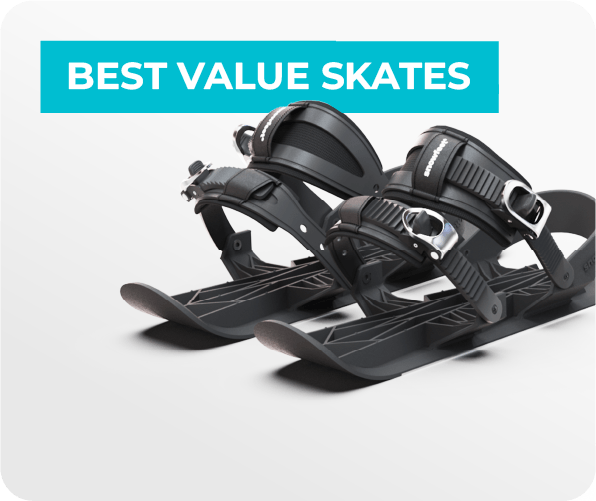



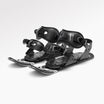
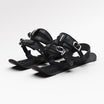
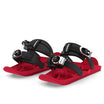
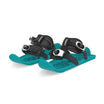

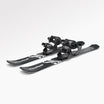

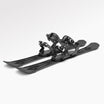
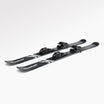






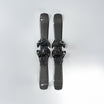
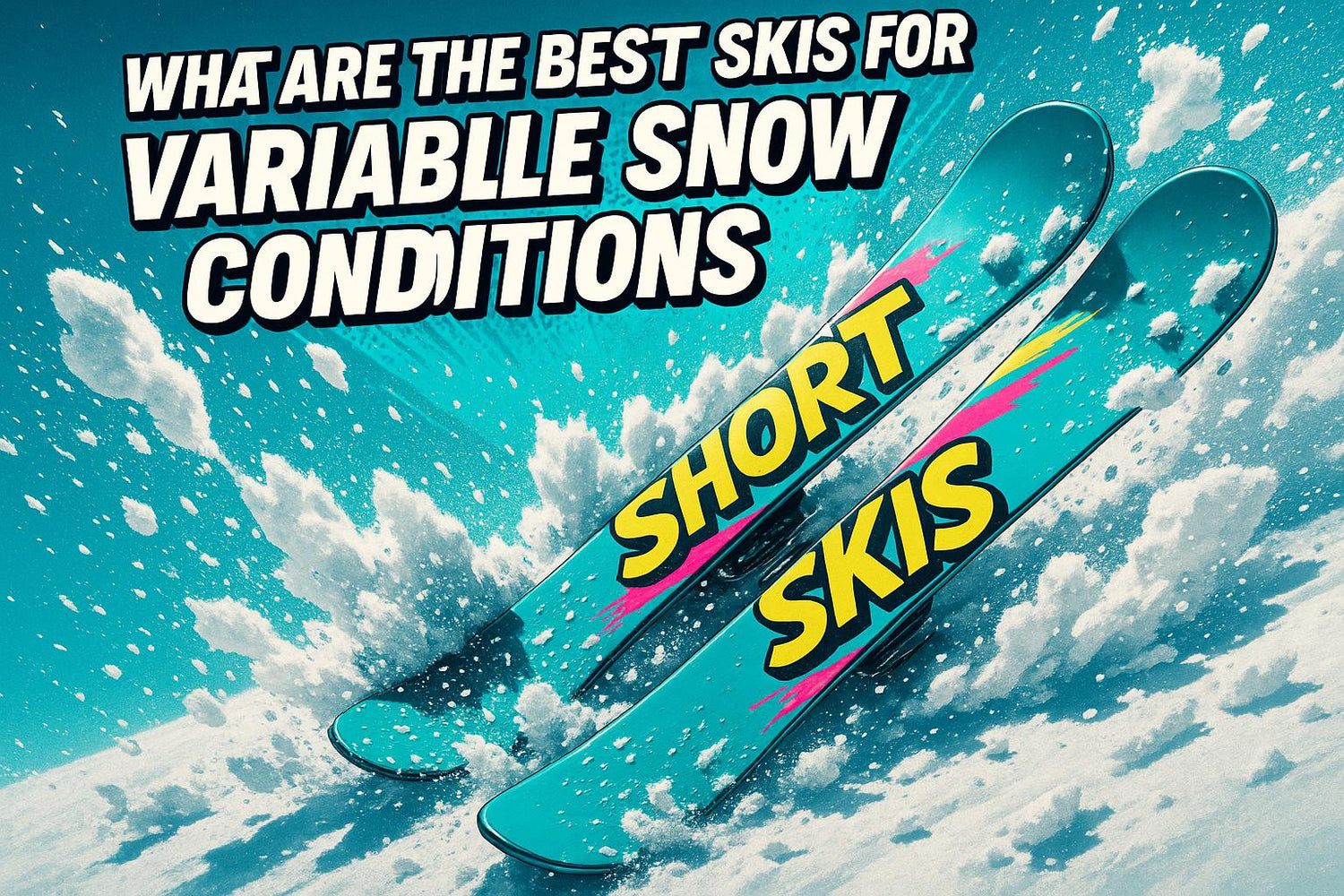
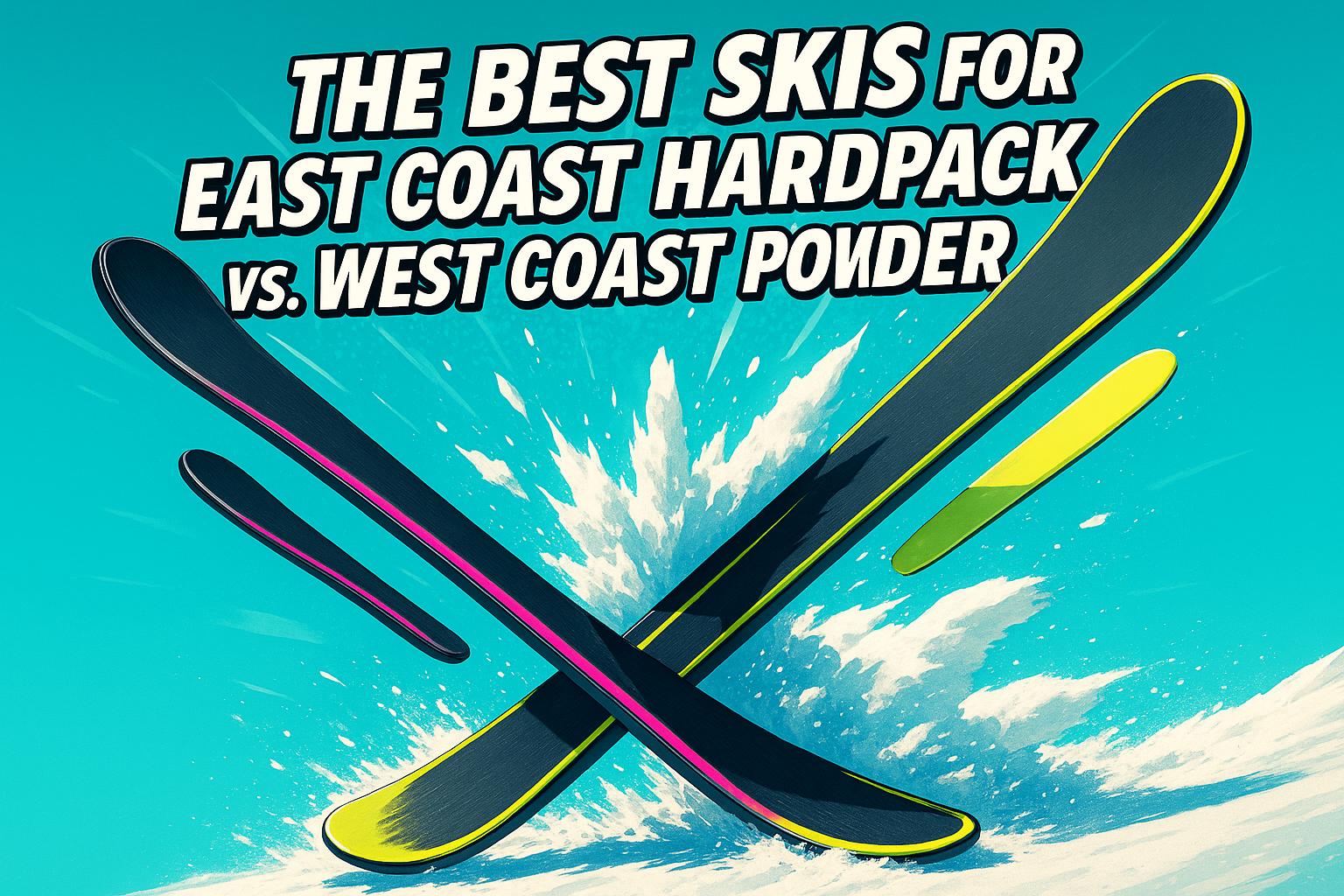

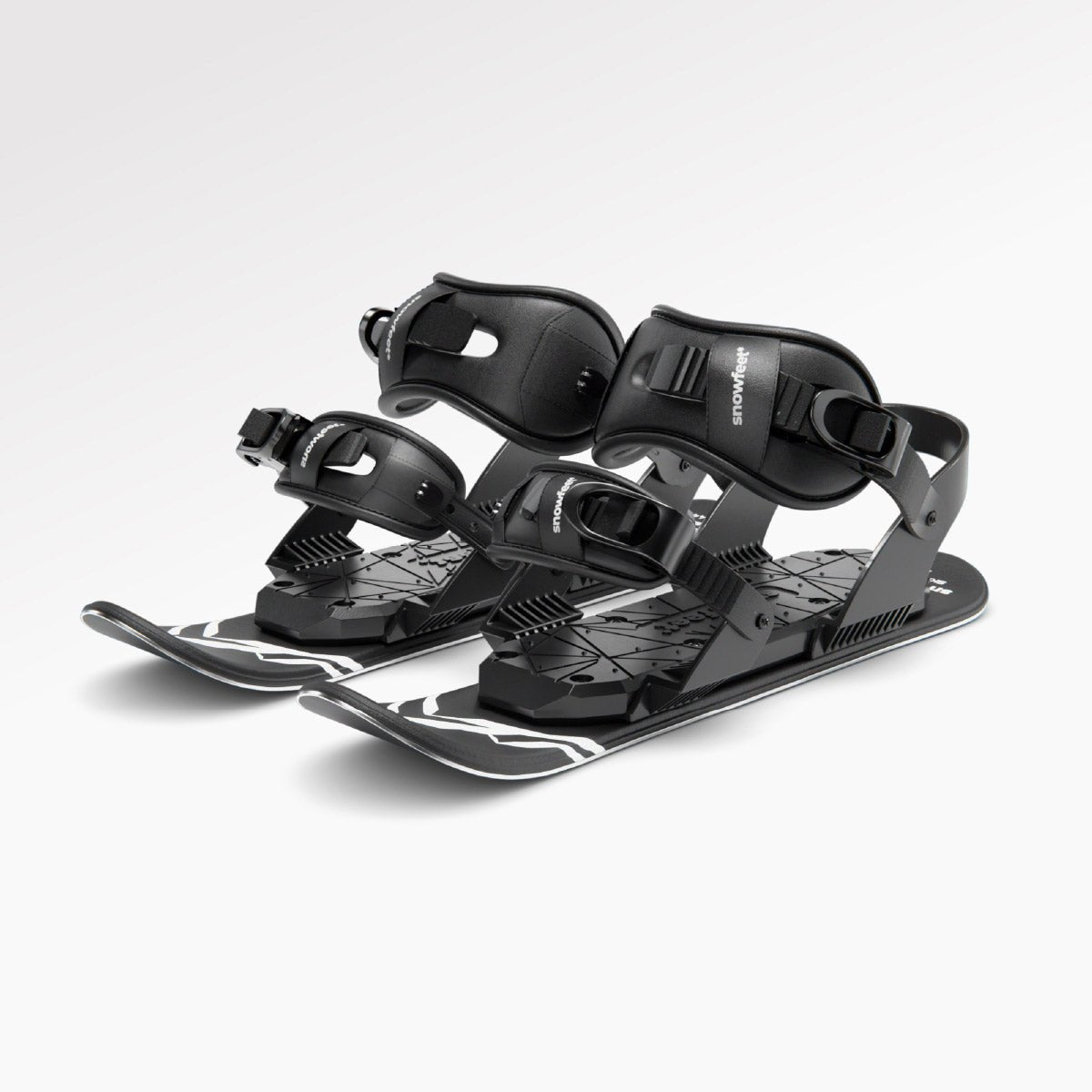
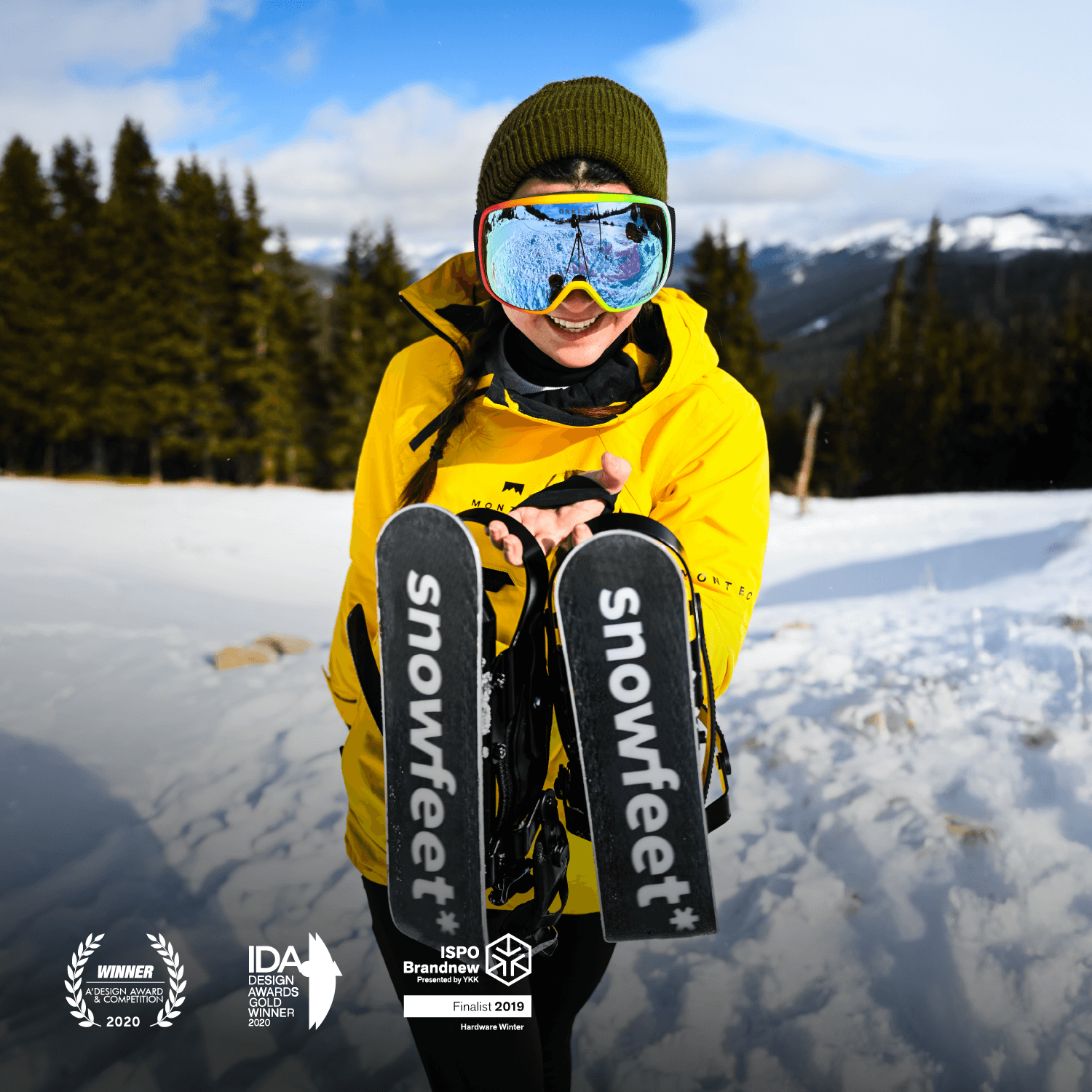
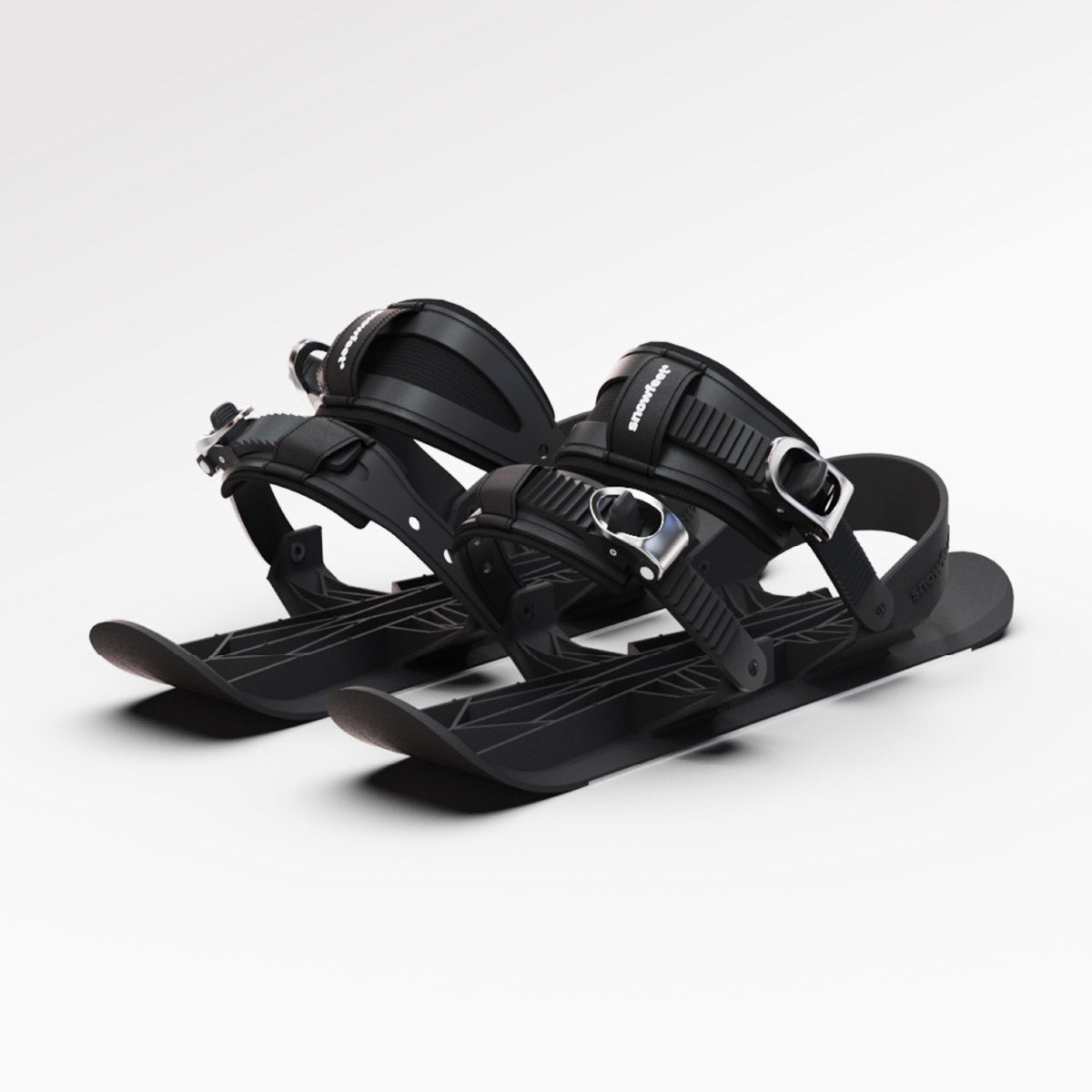

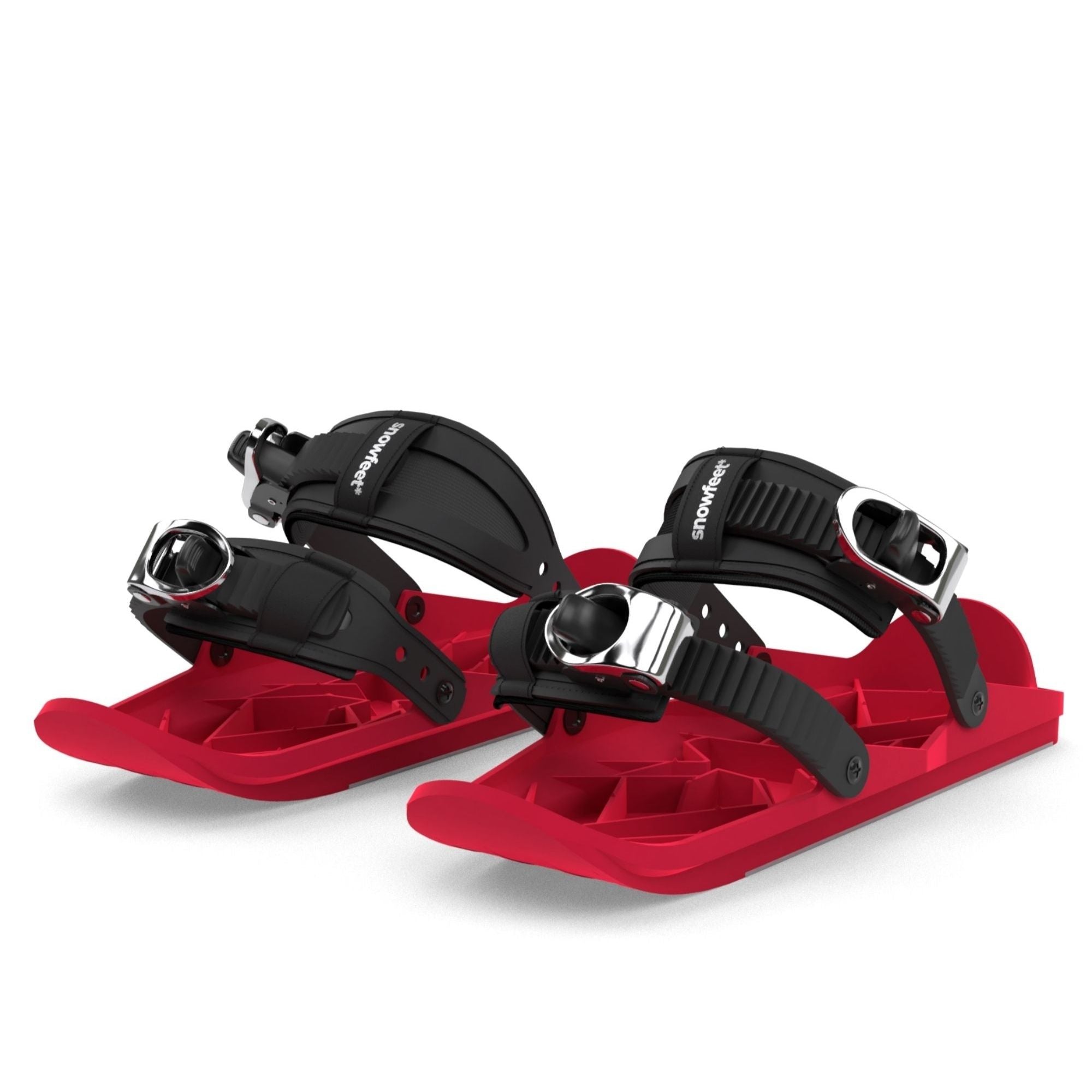
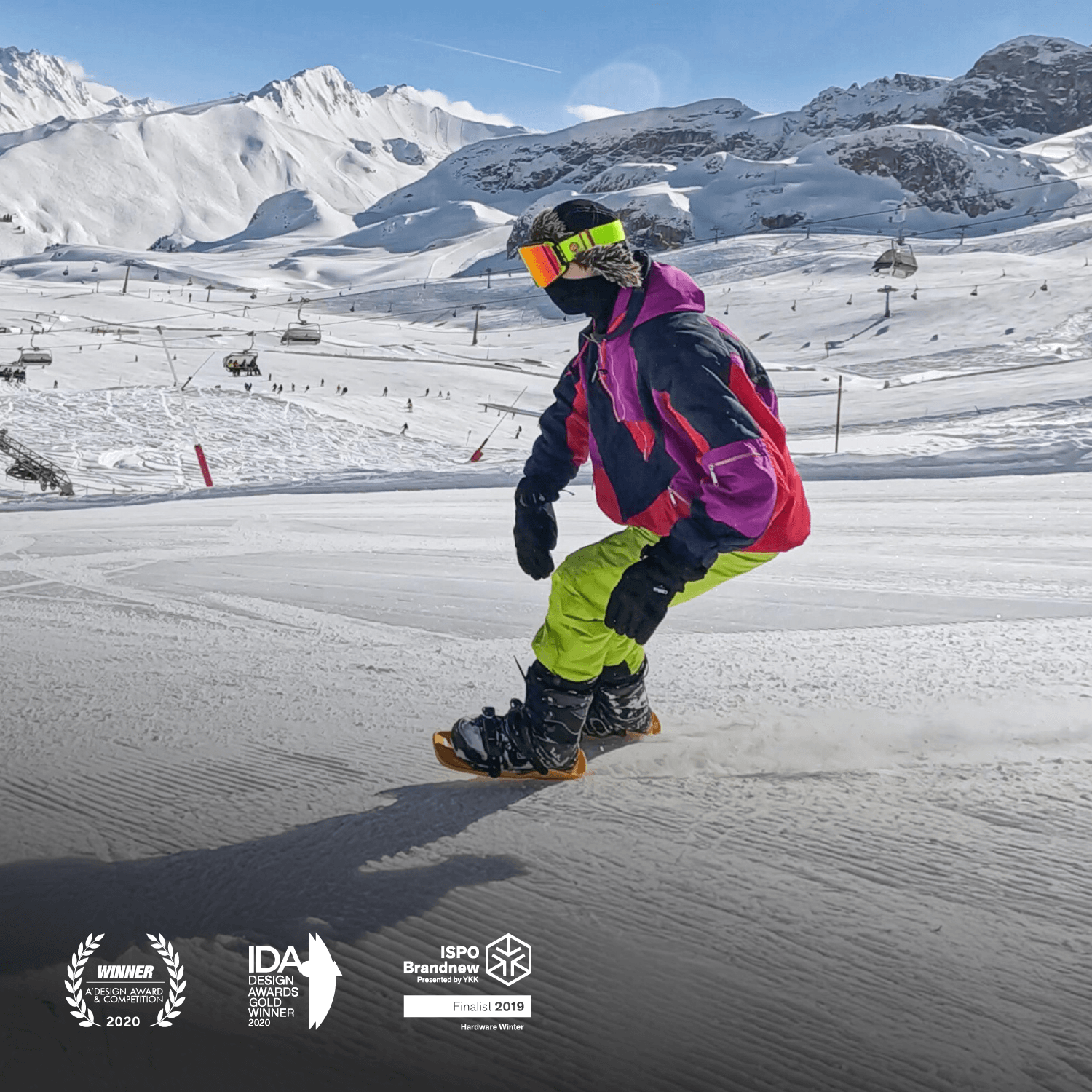


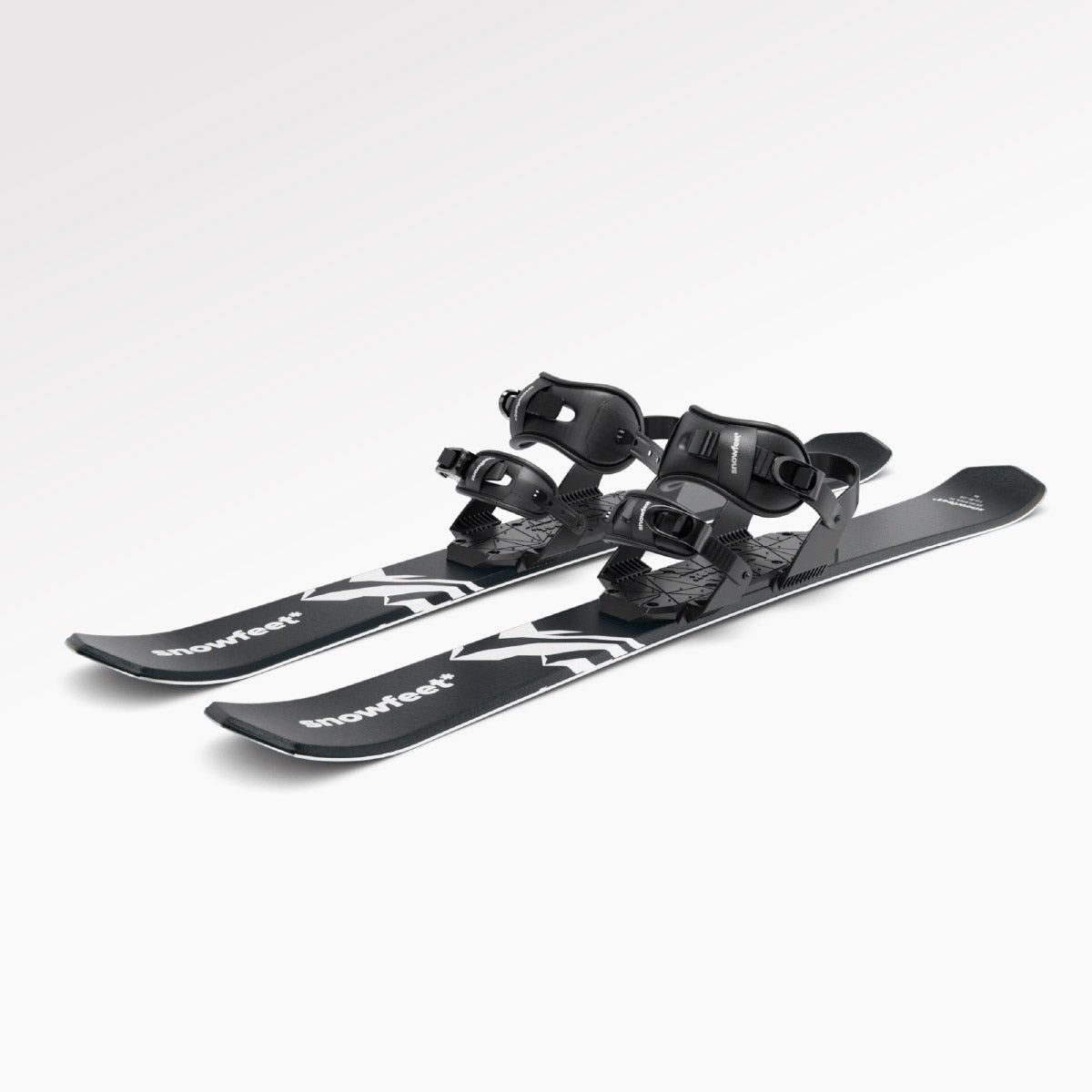
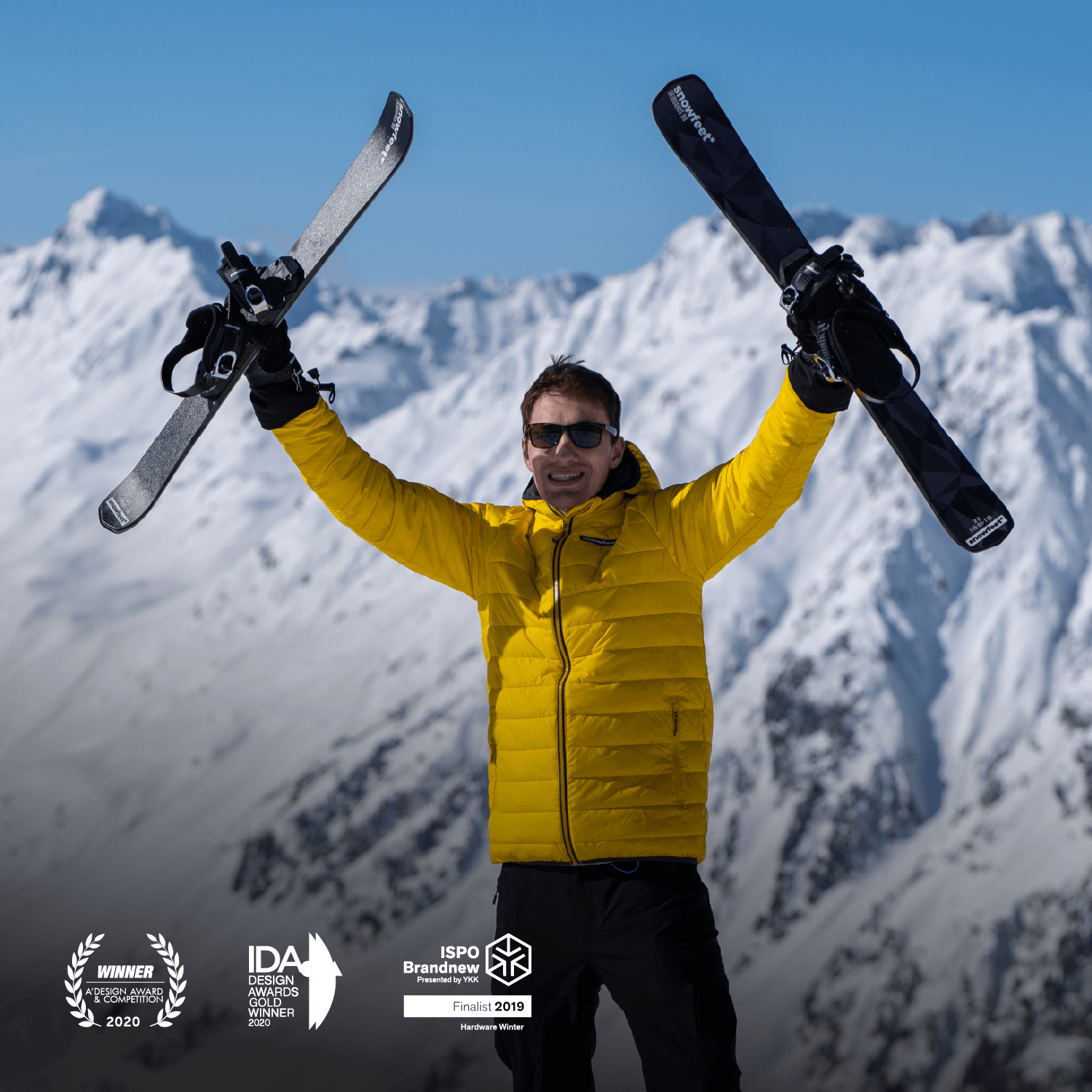
Zanechte komentář
Tento web je chráněn službou hCaptcha a vztahují se na něj Zásady ochrany osobních údajů a Podmínky služby společnosti hCaptcha.